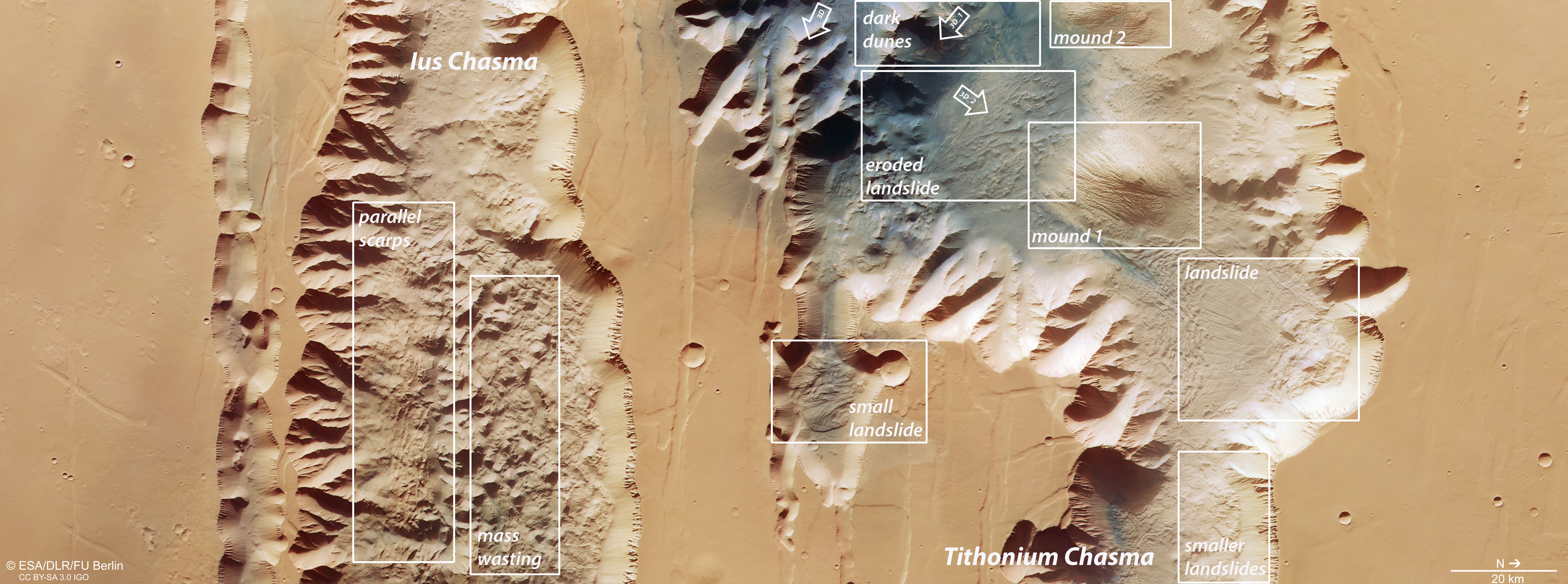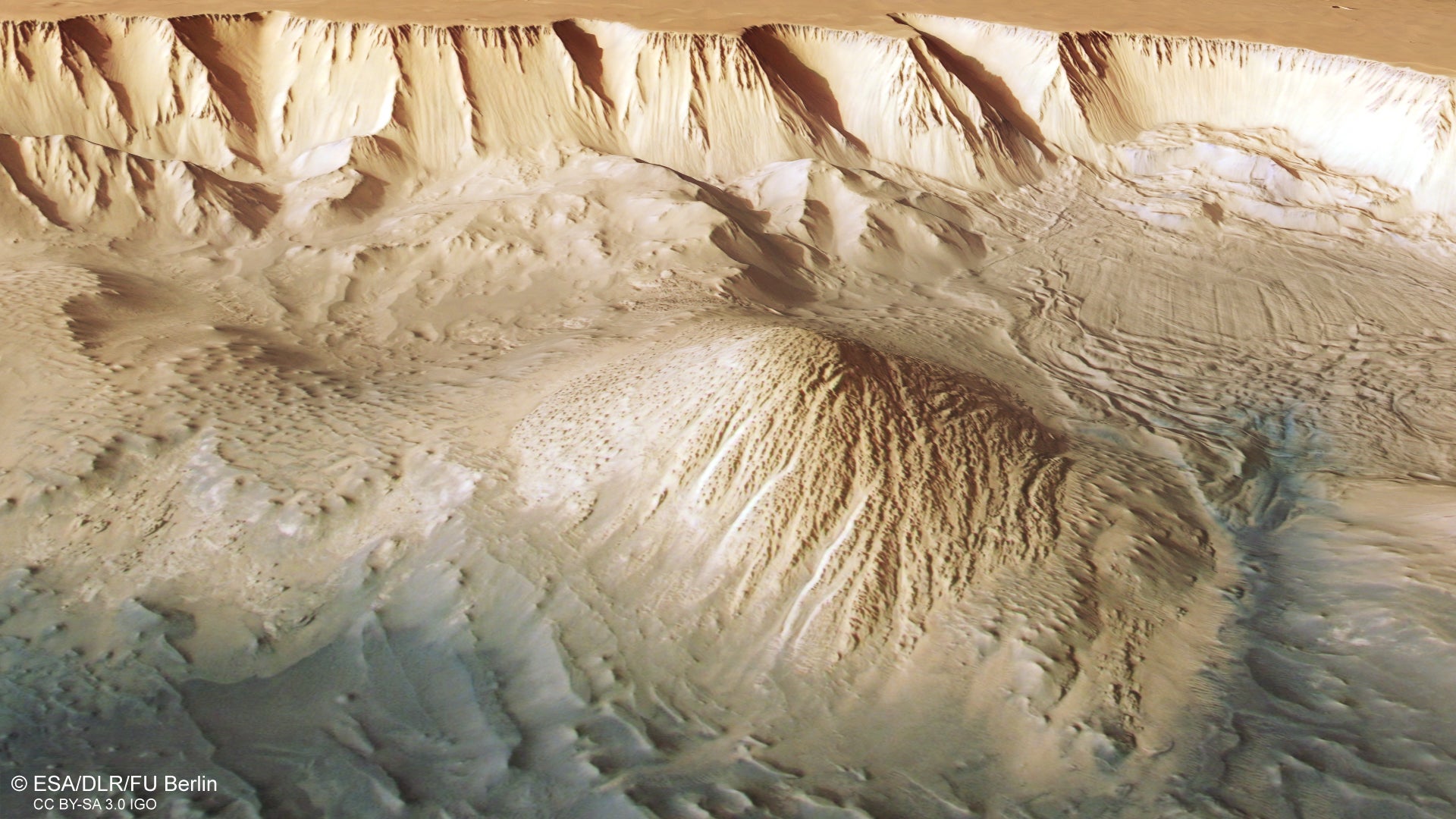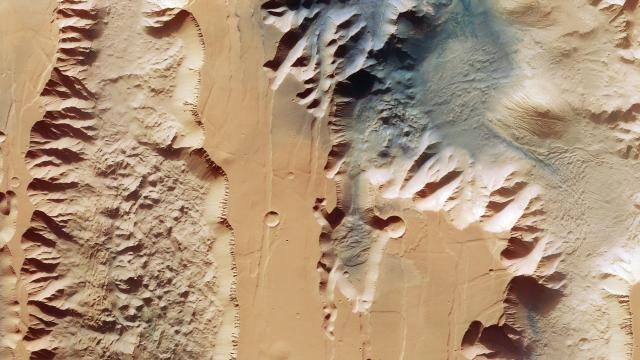The Mars Express Orbiter recently imaged a canyon system on the Red Planet that is nearly 10 times longer, 20 times wider, and five times deeper than Earth’s Grand Canyon.
The massive feature is called Valles Marineris (Mariner Valleys) and it’s the largest canyon system in the solar system. According to an ESA release, if it were on Earth, the canyon system would stretch from the northern tip of Norway to the bottom of Sicily.
Mars Express has been orbiting the Red Planet since 2003 and has captured remarkable views of the planet’s geological features from above. The satellite is also charged with studying the Martian atmosphere and mapping the planet’s mineral makeup.
The orbiter also peered below the planet’s surface, thanks to its MARSIS instrument; those observations have shined light on what lies beneath the Martian south pole.
The recently imaged system is characterised by two main trenches, the 840 km Ius Chasma and the 805 km Tithonium Chasma. The trenches are over 6 km deep in some places. The area of the chasms was imaged by the orbiter’s High Resolution Stereo Camera on April 21, in what was the spacecraft’s 23,123rd orbit around Mars. The orbiter took true colour images of the chasmata, showing us how the structures would appear to the naked eye.

In the images, the sand atop Tithonium Chasma is darker, suggesting that it may have volcanic origins. There are also mounts near the sand dunes on top of the structure, each nearly 3 km tall. The mounds’ eroded shape is probably due to the intense Martian winds, which sometimes kick up into enormous storms that can kill spacecraft.
Adjacent to the dark dunes is evidence of a Martian landslide; there also appear to have been landslides on the opposite side of Tithonium. The events are noticeable at the bottom right of the image.
Mars Express actually captured the chasmata from directly above, showing the topology of the two structures. The images indicate the way the rock had separated, due to the ancient separation of tectonic plates.

